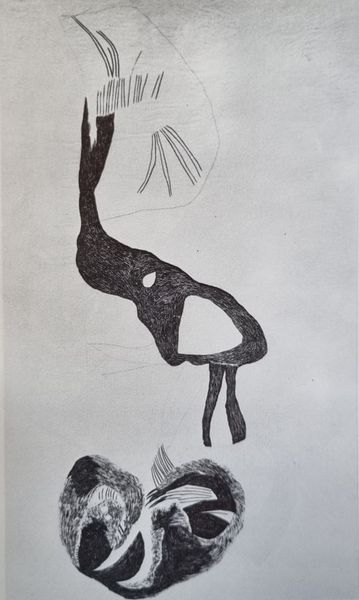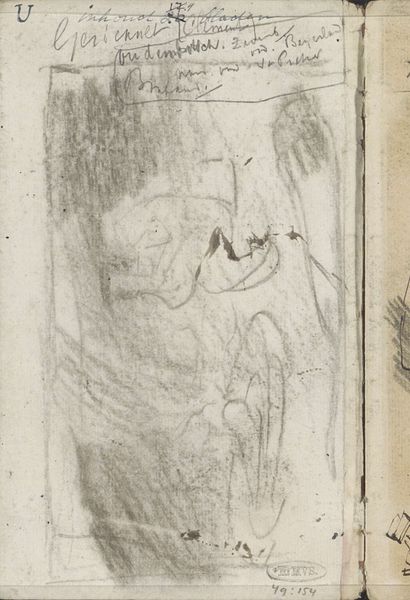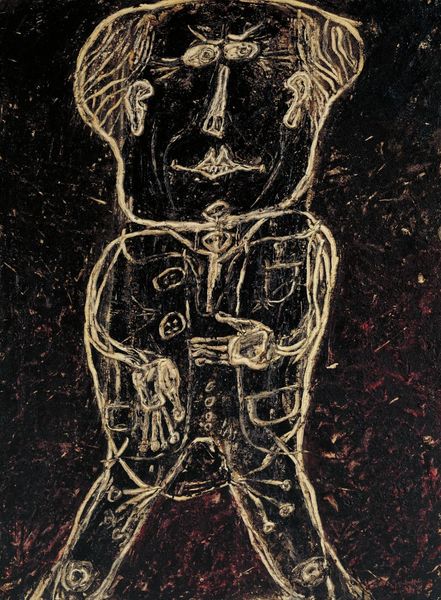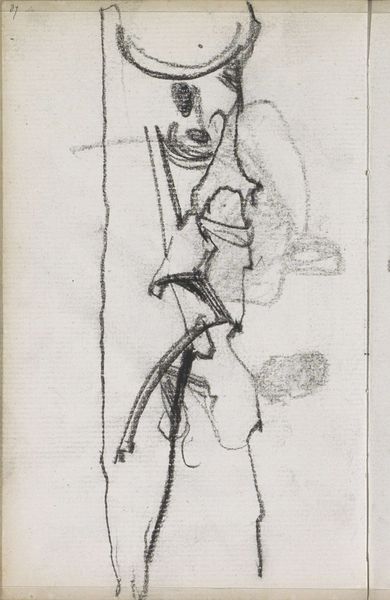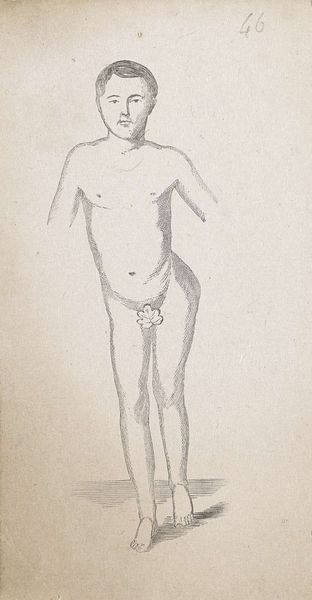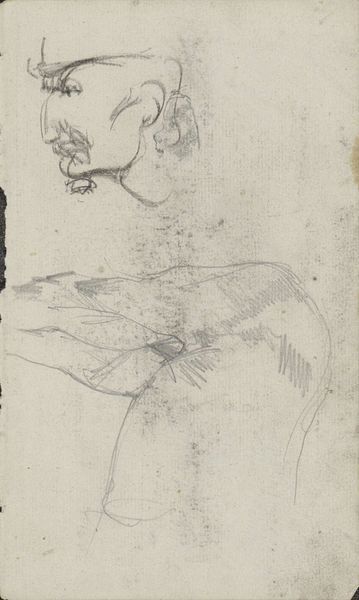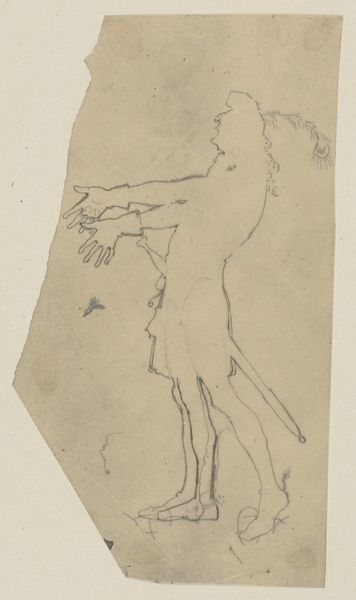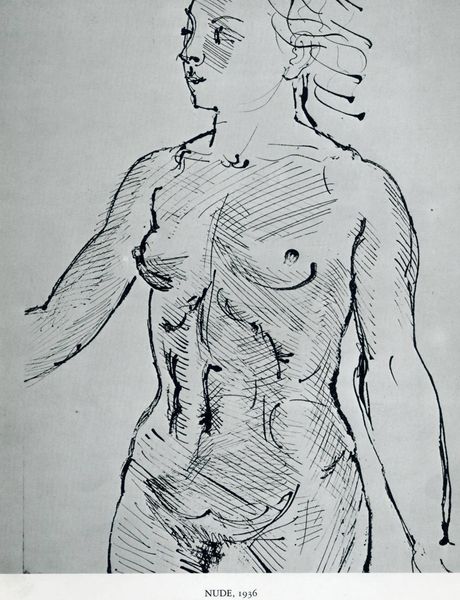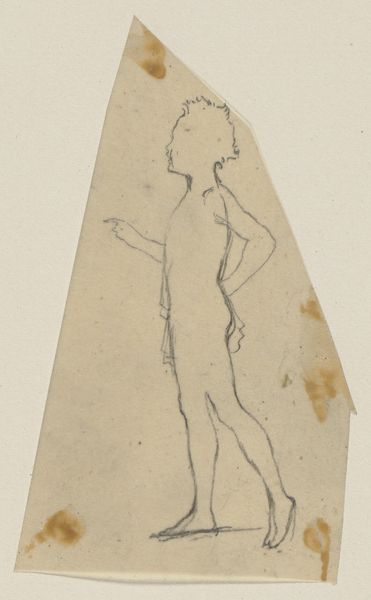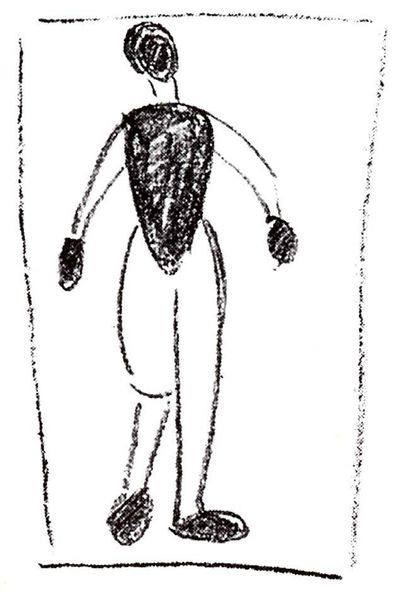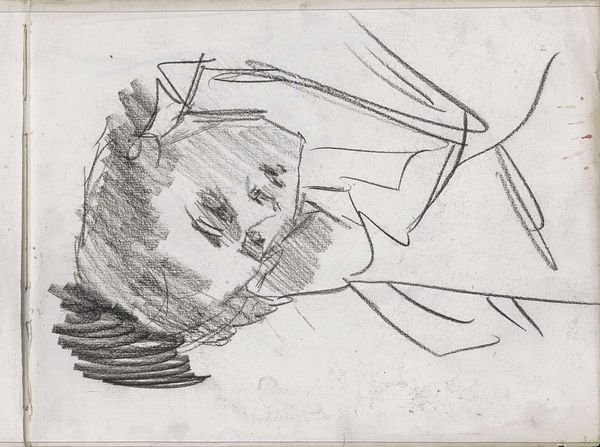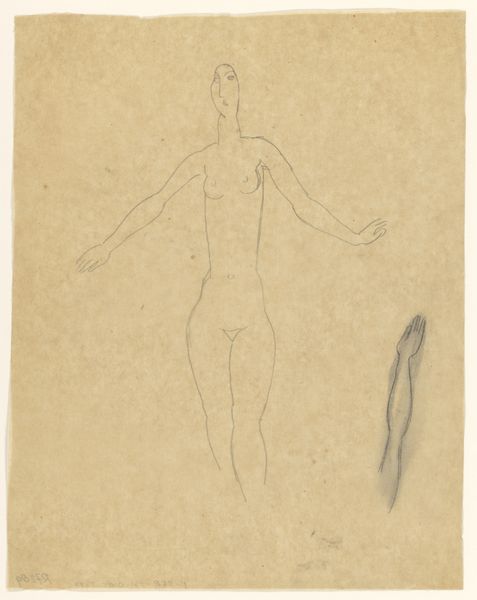
Copyright: Public domain
Curator: Vajda Lajos's "Démon" from 1940 offers a compelling dive into the artist’s explorations of identity during a turbulent period. Editor: Immediately, the frenetic energy grabs you. It’s a haunting work – the graphite and charcoal almost seem to writhe on the page, a raw display of emotion. Curator: Indeed. Vajda's artistic trajectory was significantly shaped by the socio-political landscape of pre-war Hungary. He sought to represent internal realities through external forms. This work, rendered primarily in graphite and charcoal, echoes broader trends in expressionism, where personal experience and trauma found visual outlet. Editor: It’s hard to ignore the artist's hand here. The deliberate smudging and layering… it speaks to a process of wrestling with the materials. Charcoal allows for such immediacy, such vulnerability in mark-making. One can almost feel the artist's anxiety. And look closely–it seems to depict two figures, one perhaps dominating the other. Curator: Absolutely. It raises questions about Vajda's personal struggles but also echoes societal power dynamics. Consider how he distorts traditional portraiture— the eyes, particularly, are so striking. He creates not just an image, but an icon. The work certainly anticipates the impending darkness of the war years. Editor: And that tension between meticulous detail and violent erasure! Notice how parts of the figure seem to dissolve back into the paper. It disrupts any clear reading of the subject, pushing us to confront uncertainty. I find that lack of finish incredibly potent. Curator: And within this work, as with much of his practice, there’s a tension between abstraction and figuration. What appears to be a recognizable form constantly verges on dissolving into pure shape and texture. We can also contextualize the artwork’s modernism within the avant-garde movement of the time. Editor: So, this isn’t just about what is depicted, but how it’s made… I’m left thinking about how materials can embody psychological states. Curator: For me, understanding how the broader currents of history informed such personal artistic gestures becomes vital to understanding its powerful impact. Editor: Right. It truly seems as though process becomes a form of emotional excavation here.
Comments
No comments
Be the first to comment and join the conversation on the ultimate creative platform.
